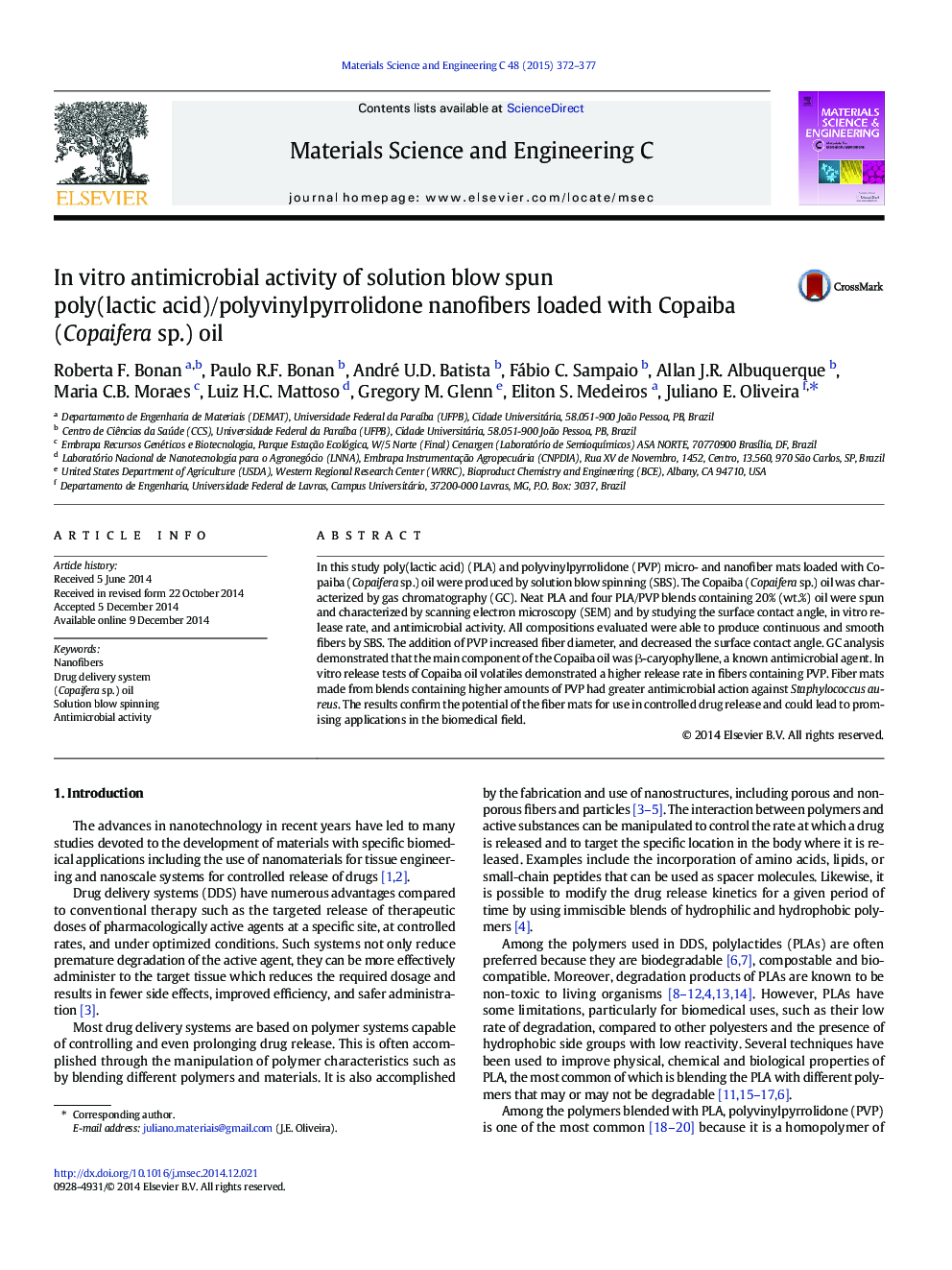| Article ID | Journal | Published Year | Pages | File Type |
|---|---|---|---|---|
| 1428469 | Materials Science and Engineering: C | 2015 | 6 Pages |
•An efficient method for production of antimicrobial nanofiber mats using solution blow spinning was reported.•Nanofiber mats containing Copaiba oil were efficient against Staphylococcus aureus.•Nanofiber composition changed morphological properties and antimicrobial action.
In this study poly(lactic acid) (PLA) and polyvinylpyrrolidone (PVP) micro- and nanofiber mats loaded with Copaiba (Copaifera sp.) oil were produced by solution blow spinning (SBS). The Copaiba (Copaifera sp.) oil was characterized by gas chromatography (GC). Neat PLA and four PLA/PVP blends containing 20% (wt.%) oil were spun and characterized by scanning electron microscopy (SEM) and by studying the surface contact angle, in vitro release rate, and antimicrobial activity. All compositions evaluated were able to produce continuous and smooth fibers by SBS. The addition of PVP increased fiber diameter, and decreased the surface contact angle. GC analysis demonstrated that the main component of the Copaiba oil was β-caryophyllene, a known antimicrobial agent. In vitro release tests of Copaiba oil volatiles demonstrated a higher release rate in fibers containing PVP. Fiber mats made from blends containing higher amounts of PVP had greater antimicrobial action against Staphylococcus aureus. The results confirm the potential of the fiber mats for use in controlled drug release and could lead to promising applications in the biomedical field.
